Mara Alber is an 18-year-old German creative midfielder who has garnered a lot of interest from the footballing world this season through her performances for Hoffenheim.
Having made her full senior debut on 3rd April 2022 against Bayer Leverkusen. Since then, she has gone from strength to strength, and this season has helped propel Hoffenheim to third place for the first time and potentially a return to the Champions League after a three-year gap, this already having attracted interest from clubs such as Chelsea.
Alber has already starred for the German national youth sides from U15-U20 levels and scored a late equalising goal in the U17 European championship final, where they would eventually defeat Spain on penalties. The next logical step would be a step up into the German WNT.
In this tactical analysis, we will break down some key aspects that helped Alber get onto the 2024 NXGN 25 Wonderkids to watch list. The scout report will provide an analysis of her ability as a goalscorer, chance creator, and dribbler while also looking at the defensive tactics she has deployed so far in her young career.
Goalscoring
One of Alber’s greatest strengths is her ability to convert chances into goals. She is adept at converting these chances due to her ambidexterity, which enables her to change the angle to avoid hitting defenders. Alternatively, it enables her to take shots as soon as the opportunity arises rather than having to hesitate, which could cost her the fine margins you have at the top of the sport.
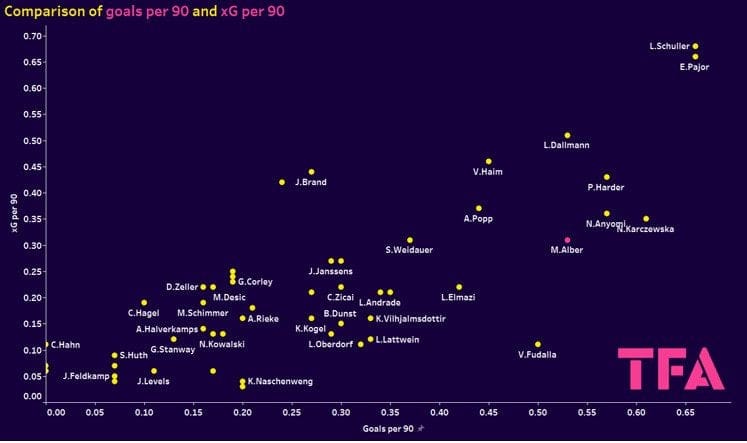
This graph here compares goals per 90 to xG per 90. We use this to try and identify players who are regularly getting into goalscoring positions but also those who might be exceeding their expected output.
In Alber’s case, she is the 11th-best performer in terms of xG at 0.31 xG per 90. However, when you compare that to her actual output, she is converting at 0.53 goals per 90, which is the sixth-best in the division. This means that she is converting at an efficient rate, with her exceeding her xG by a greater margin than international stars such as Pernille Harder.
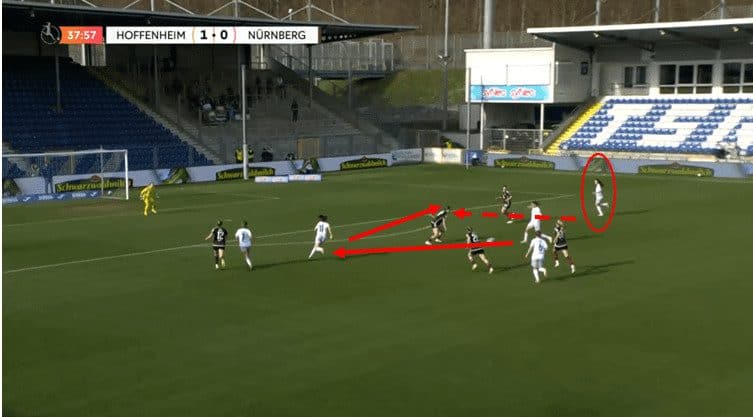
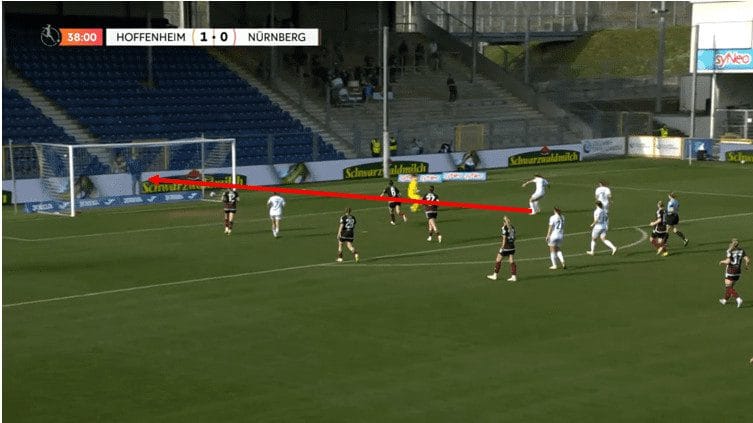
In this example, you can see Alber’s ability to change the angle of shots by using her right foot, with Alber occupying the space on the right flank. The ball is played centrally to Jana Feldkamp. As this happens, the left-sided defender is drawn narrow, which gives the leaves Alber in space. Alber lets the ball run across her body and then hits a powerful right-footed shot, which results in a goal.
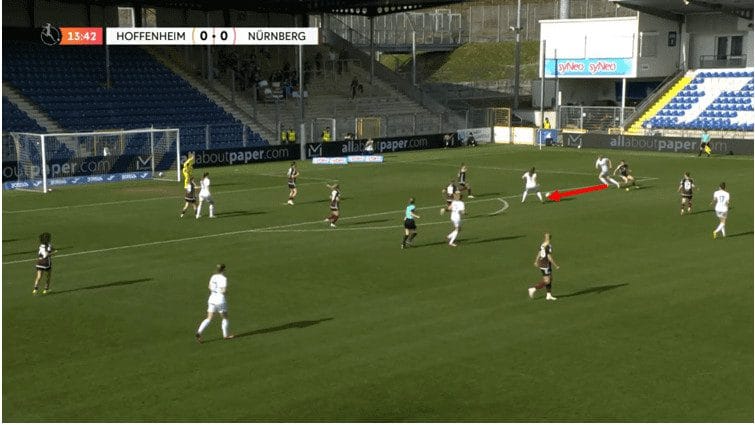
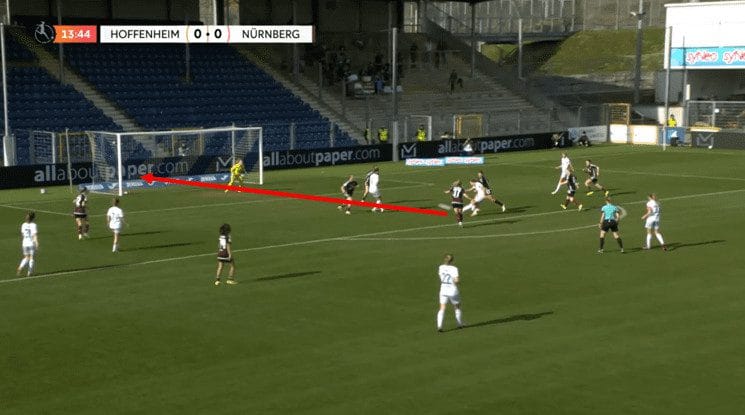
In this example, the ball comes to her from right to left. She then opens out to face the goal. She then takes two touches with her left foot before striking the ball into the goal. Most significant in this example is how she uses her two-footedness to keep the ball away from the defenders by putting the ball on her left foot, where nobody can steal it from her.
Playmaking
A key aspect of Alber’s success is her ability to be an important creator for the side. She can do this due to her ability on the ball and to find herself in dangerous positions through intelligent movement, which offers several dimensions to her game.
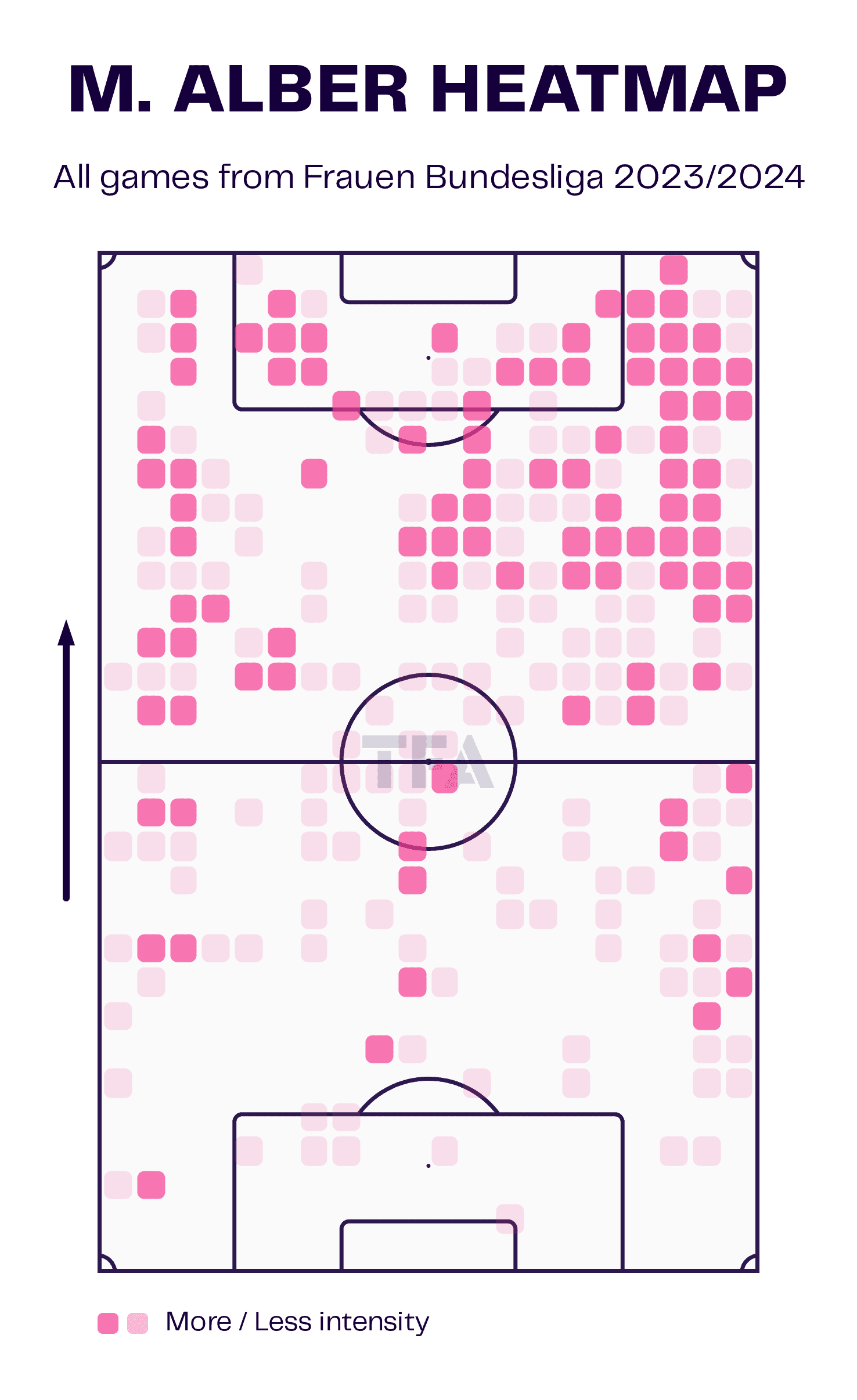
This heat map demonstrates Alber’s variety of positions throughout the season. We will demonstrate the variety of ways in which Alber can be effective in chance creation in a moment, but first, let’s take a look at just how effective Alber is in chance creation.
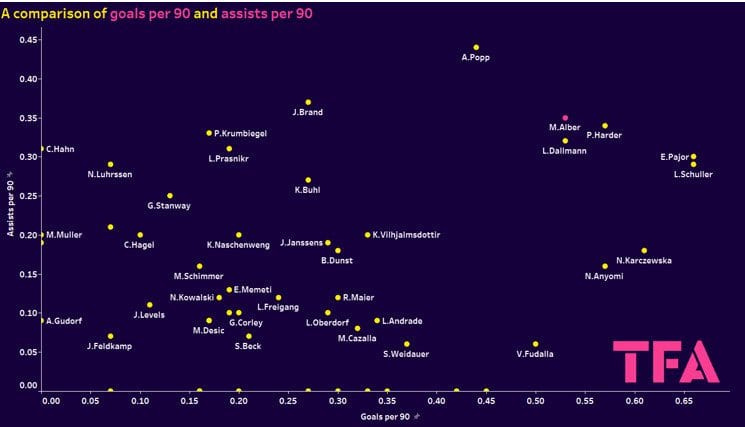
This graph here compares goals scored per 90 with assists per 90. The logic is that those who score and create goals are efficient chance creators.
What you will notice is that Alber is one of the top performers in both categories. She averages 0.53 goals per 90, which puts her in sixth place in the division, only behind internationals as Pernille Harder, Ewa Pajor, Lea Schüller, Nikola Karczewska and Nicole Anyomi. While still being ahead of German legend Alexandra Popp on 0.44.
When you look at assists per 90, it’s an even more impressive story. Alber is the third-best performer, averaging 0.44 assists per 90, only behind Wolfsburg pairing Popp and Jule Brand.
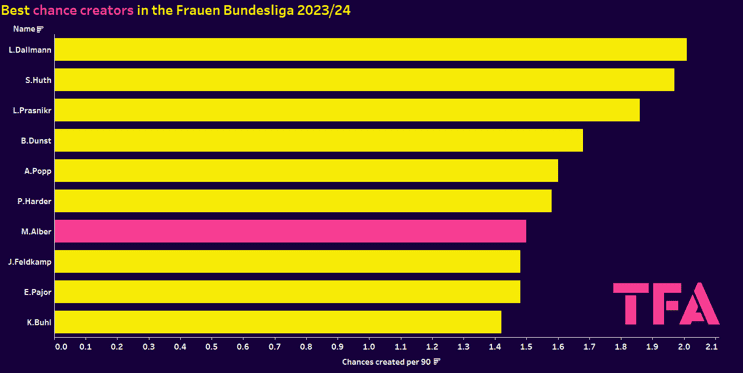
However, you might argue that Alber is supported by teammates who have just been incredibly efficient in front of goal. To disprove this, we compared the chances created per 90 minutes in the Frauen Bundesliga this season.
You can see that the number of assists per 90 is not just down to mere luck, as Alber consistently produces significant chances for teammates every game, as this graph demonstrates, with Alber creating the seventh most chances per 90 in the division at 1.5.
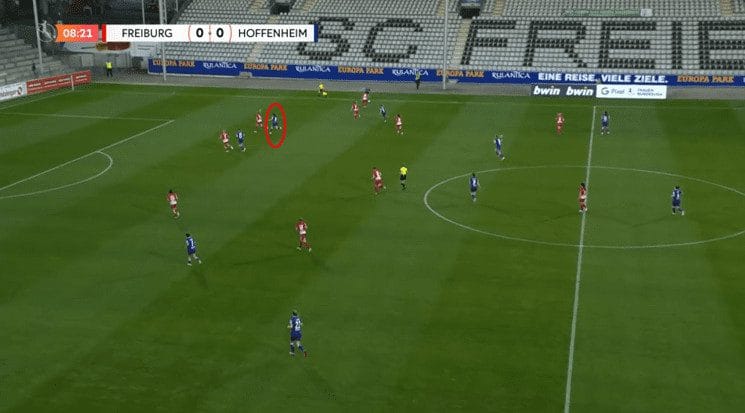
This is an example of the variety of positions that Alber can take up, playing as a second striker, occupying one of the central defenders, and trying to create one-on-one match-ups across the front line for Hoffenheim.
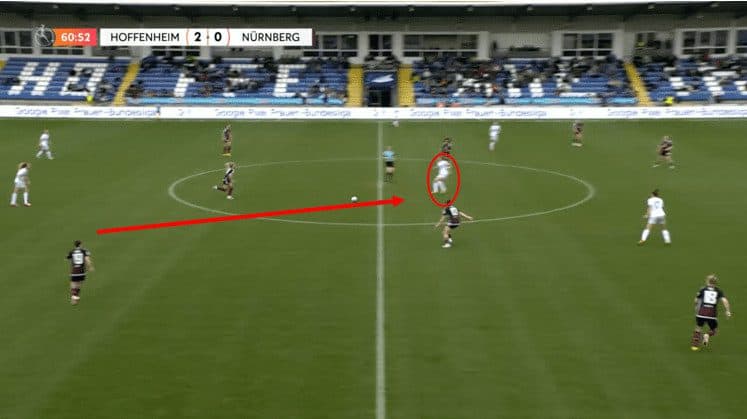
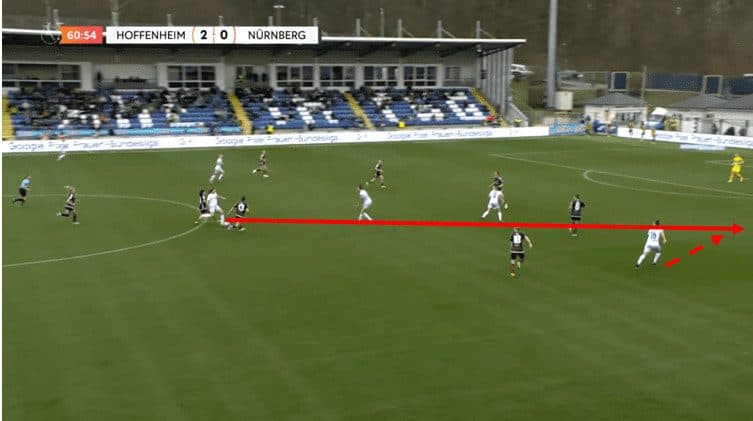
In this example, you can see how Alber has dropped deeper into the midfield to receive the ball with her back to goal. She is able to receive the ball into her feet before turning and playing a positive through ball for teammate Nicole Billa to run onto, creating a good chance for the Hoffenheim side.
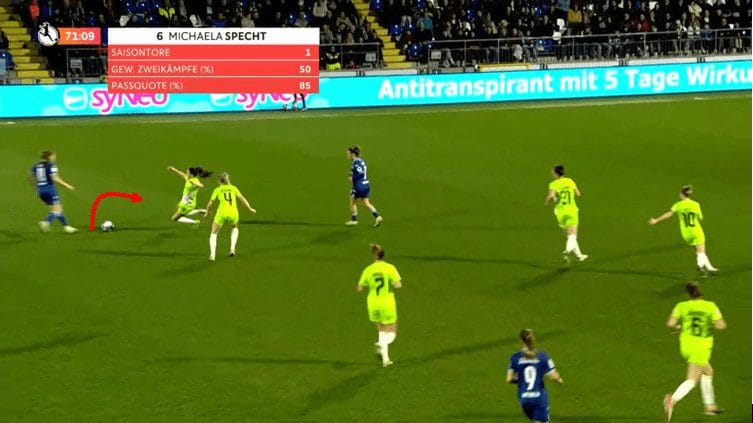
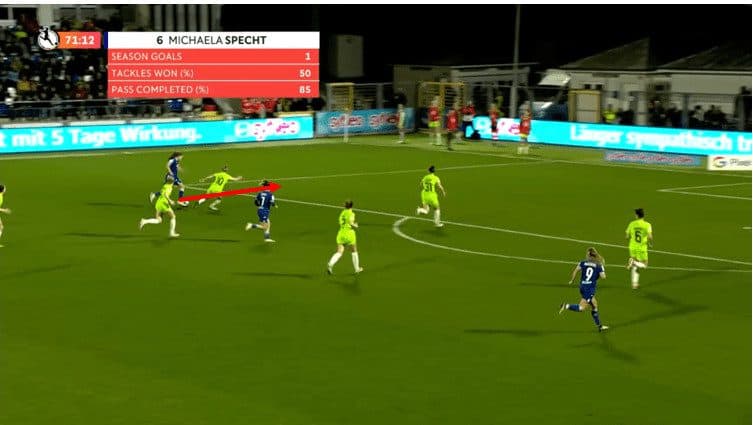
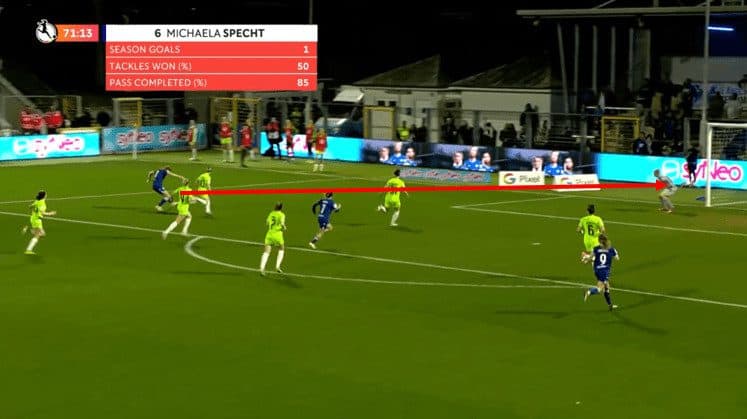
In this example, Hoffenheim’s Ereleta Memeti launches a rapid counterattack, and eventually, the ball falls to Alber. However, it’s more of a 50-50 challenge with Wolfsburg’s Wedemeyer. Alber has the calmness to flick the ball over Wedemeyer’s slide tackle. Then, Alber has the speed to drive outside Svenja Huth, and she is able to get a shot away with her left foot.
Dribbling
In the previous sections, we have examined some of the reasons why Alber is such a promising prospect. However, none of this would be possible without Alber’s ability to create space for herself by beating opponents and carrying the ball forward with the ball at her feet.
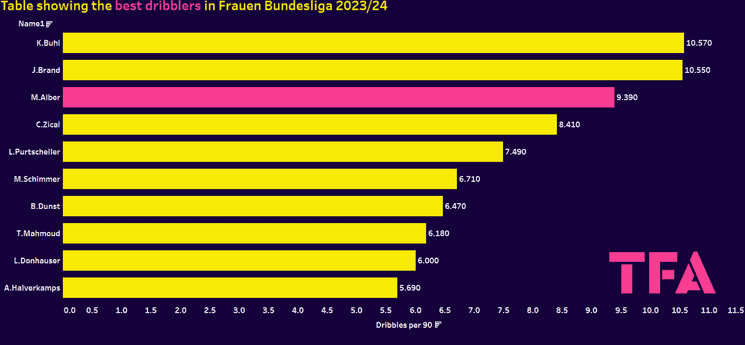
This graph here compares all the best dribblers in the Frauen Bundesliga this season, and again, what you can see is Alber is an elite performer, with her completing on average 9.39 dribbles per 90 only behind German internationals Jule Brand and Klara Bühl. To back that up, she has been completing these dribbles at a success rate of 54.17%. For a frame of reference, Brand and Bühl have dribble success rates of 55.56% and 46.43%, respectively.
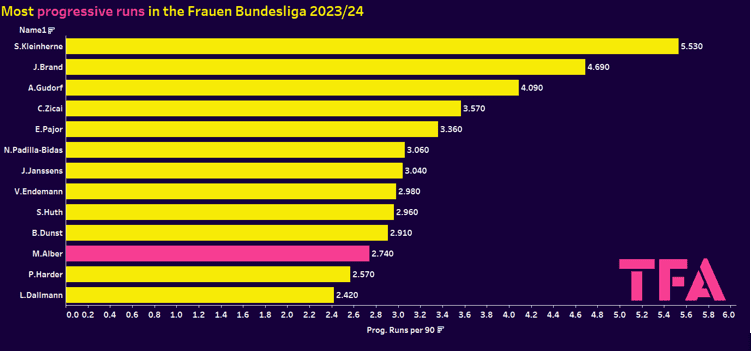
Not only is Alber a valuable asset in winning her one-on-one dribbles, but she is also a valuable asset in ball progression. She is able to carry the ball forward, averaging 2.74 progressive runs per 90, which is the 11th-best in the division. This is a particularly noticeable asset in transitions when the spaces open up, and she has more space to drive into.
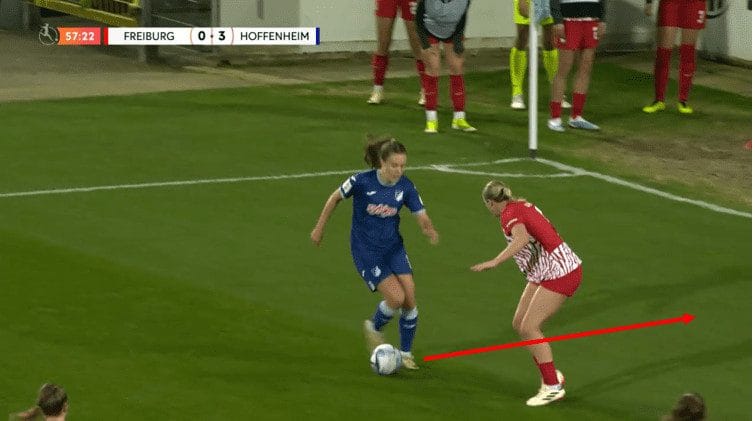
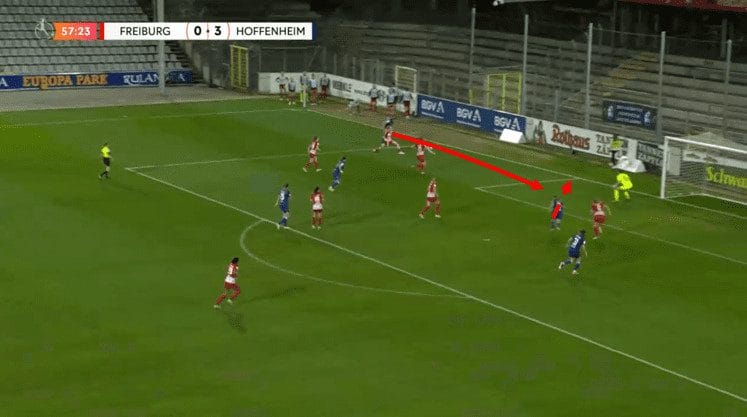
In this example, Alber is driving at Freiburg’s right-back Alicia-Sophie Gudorf. What you will see is as Alber approaches the defender. Gudorf’s hips are oriented towards the goal, which limits her mobility. Alber identifies this and attacks Gudorf’s back by using a nifty stepover. She is able to create the space for herself to play a cross towards Janssen, who is attacking the front post. However, midfielder Steuerwald is able to get back and clear the ball away for a corner.
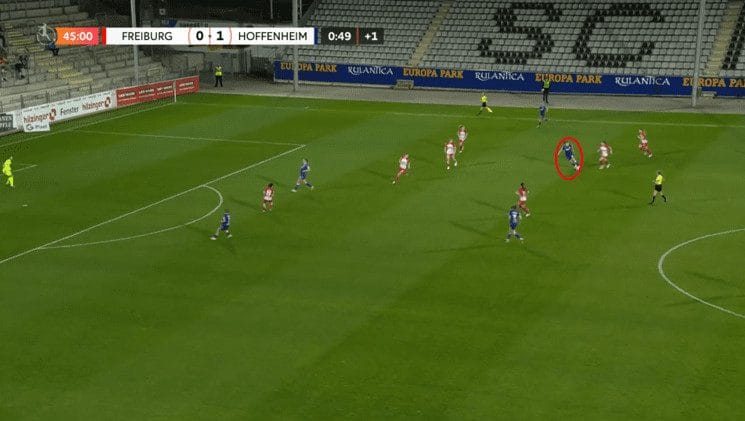
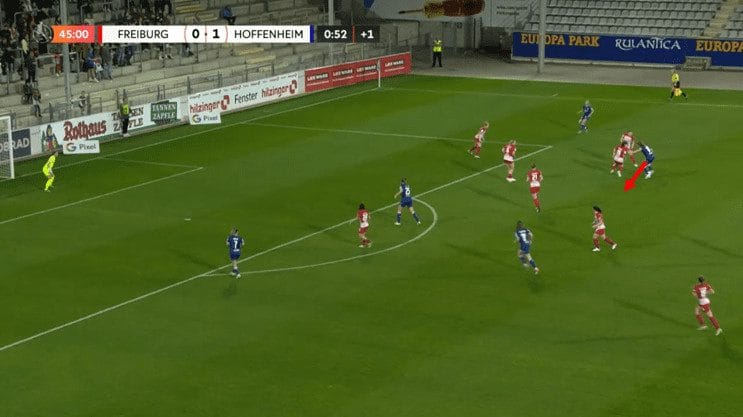
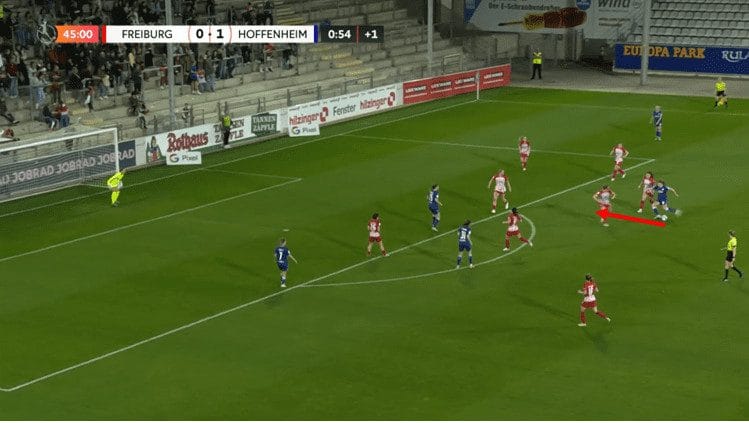
In this situation, you will notice how Alber picks up the ball between the Freiburg lines and can drive forward with the ball. Then Alber can identify the overcommitted body shape of the Freiburg midfielder and she cuts onto her left foot and takes a shot which is blocked.
Defensive phase
Although not a great strength of Alber’s, the defensive phase is undoubtedly an area where Alber has shown promise. With a demonstrable commitment to engaging with this phase of the game, be that picking up loose balls or marking opponents in the build-up phase.
With her averaging 2.93 interceptions per 90 and 6.07 ball recoveries per 90, she has proved to be a useful asset on the defensive side of the ball. However, despite this, she is also the 17th-worst performer in terms of allowing progressive passes, on averaging, conceding nine progressive passes per 90.
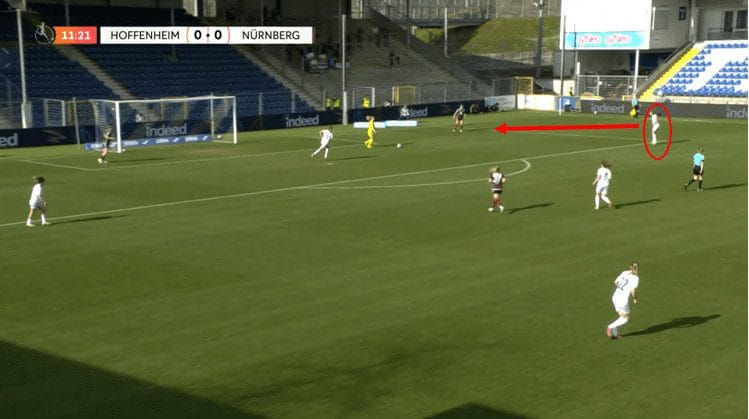
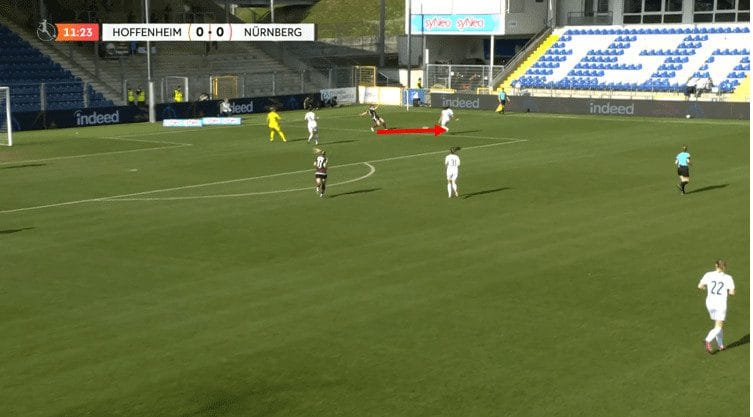
This example demonstrates how Alber can be used in a high press. With Nürnberg trying to play out from the back, you can see the depth that Alber initially plays with. However, as soon as the ball is played to the left centre-back, Alber is quick to react and put pressure on the ball.
What is most impressive about this clip is her understanding of body angles and how to approach when pressing. The angle of her approach blocks the passing lane down the lane, resulting in a block, which in turn results in a high regain for Hoffenheim, which can launch a dangerous attack.
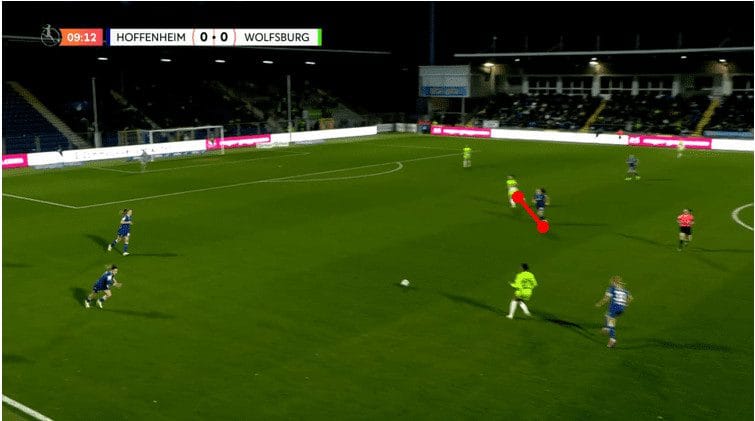
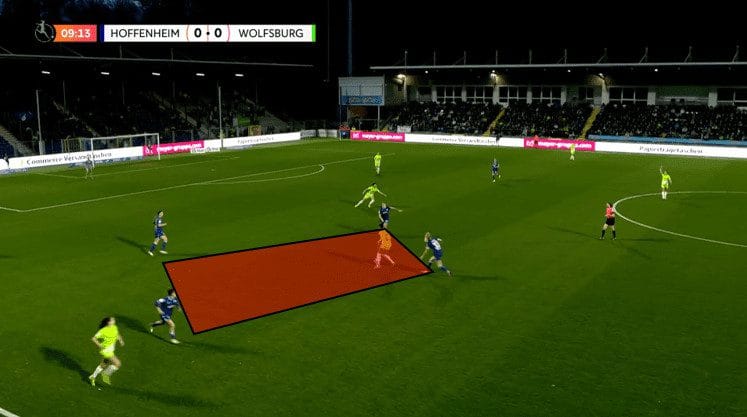
Here is an example of another way in which Alber can be deployed defensively. The briefing was very different from Wolfsburg. With Alber’s primary role being to keep track of pivot Lena Oberdorf, and in this case, as Jónsdóttir moves backwards, Alber and midfielder Fabienne Dongus compress the space and force Alber is able to win the ball for the side again in a dangerous position where they could launch a counter-attack.
Conclusion
Mara Alber is an extremely exciting prospect whose first senior international call-up can’t be far away. Her statistical output already matches and competes with the elite of the Frauen Bundesliga. With her already demonstrating the maturity and game understanding of a far older player, she has an exciting future ahead of her, which is surely one to watch out for.
With Christian Wück set to take over as the new German WNT following the Olympics, Alber is sure to be a name at the forefront of the next generation of German players coming through.






Comments